The Genesis of New Age Music
Part One - The Dawn
From the online book: Music Through the Centuries by Don Robertson (2005)
Published on DoveSong.com – Revised and expanded in 2016 and 2024
Chapter Six – The 20th Century: “Dissolution”
Out of the 1960’s arose a social and art movement that few people understand today (you had to have been there). Some called it “The Hippies” and others the “Counterculture”.
Dozens of slang expressions in common use today were born at that time. The acceptance of Eastern music and philosophies happened then, as well as the awareness of organic farming, ecology, human rights, spirituality, healthy diet, clean water, sexual liberation… our eyes were opened, and we began to deal with a new world.
Some of us who were a part of this movement carried forth our vision from the sixties as our life mission. Then of course, others just became the casualties. Meanwhile the whole counterculture movement was ridiculed, infiltrated, misrepresented, and dumbed-down for the ingestion of those who looked in from the outside via the corporate-controlled mass media.
“New age music” was one of the products of the sixties. Presented here is my own perspective of how the genre was born, what its original goals were, how it became a genre, and how that genre was changed when the major labels, radio, and other interested parties entered the picture.
I was there….
Part One
The Dawn
The dawn of the concept of new-age music and the first major records of music for meditation and relaxation.
Part Two
Hearts of Space
A radio program in Berkeley becomes a phenomenon, bringing new music to the nation.
Part Three
Digital Symphonies
The advent of innovative, mind-expanding, meditative positive electronic music from Europe.
Part Four
California
Music artists in California form an influential and important genre of new music for healing and meditation.
Part Five
Corporate Takeover
Now called “new-age music”, the new music genre is hijacked by corporate media and the major record labels.
The Dawn of New Age Music
A child of the 1960s, new age music was born among the experimentation with psychedelics and the unfolding of spirituality that ensued, fostering interest in astrology, yoga, Ti Chi, Zen Buddhism, Hinduism, esoteric Christianity and other spiritual practices. It first appeared as music for meditation.
In 1964, the first major-label album of music for meditation was recorded by Tony Scott, a jazz clarinetist who had been living in Japan. His Music for Zen Meditation was recorded in February 1964 in Tokyo. The album consisted of relaxing clarinet improvisations accompanied by Japanese koto and an occasional shakuhatchi.
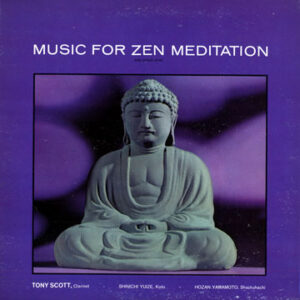
Tony Scott – “Is Not All One”
The next album of meditation music was called Inside. Another jazz woodwind player, flutist Paul Horn, had flown to India in 1966 to study meditation with Maharishi Mahesh Yogi. On April 25, 1968, during another trip to India and in the midst of making a documentary, Paul and a couple of friends went into the Taj Mahal, turned on some recording equipment, and the result was Inside, consisting of flute solos and chanting enhanced by the reverberation of the great building.

Horn went on to produce not only other albums of flute playing in reverberant halls, but collaborated with Ravi Shankar on an album, recorded another with other Indian musicians, and collaborated with Indian musicians on Paul Horn in India and Paul Horn in Kashmir.
On another album, called Inside II, Paul Horn overdubbed flutes for “Kyrie”, an instrumental rendition of an excerpt from an a cappella mass by the great Renaissance composer Giovanni da Palestrina. This piece demonstrated that Horn considered his new meditation music inclusive of more than just one type of music, regardless of culture and time. These records were not considered to be “new age music” at the time.
Paul Horn – “Mass: Kyrie”
Corinne Heline - New Age Music Prophet
Personally, I had been thinking about the idea of “new age music” since 1967, when I first began studying the books by the American metaphysical writer, Corinne Heline:
- The Esoteric Music of Richard Wagner (1948)
- Healing and Regeneration Through Music (1952)
- Beethoven’s Nine Symphonies (1963)
- Music – The Keynote of Human Evolution (1965)
- The Cosmic Harp (1969)
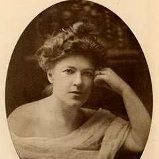
She talked about a coming new age and the music that would be associated with it. Corinne Heline’s goal, however, was not to establish a genre or a movement. Her thesis was that, according to astrology, we were very slowly evolving into an enlightened age: the age of aquarius. In this age, music would return to its proper role as an agent for healing, meditation and upliftment.
The best reference material that I have found about the idea of a new age is the book Lost Star of Myth and Time by Walter Cruttenden. It talks about the 25,920-year cycle called the “Great Year”. I discussed this subject in my 1970 book Kosmon.
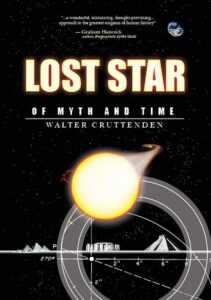
The First New-Age Music
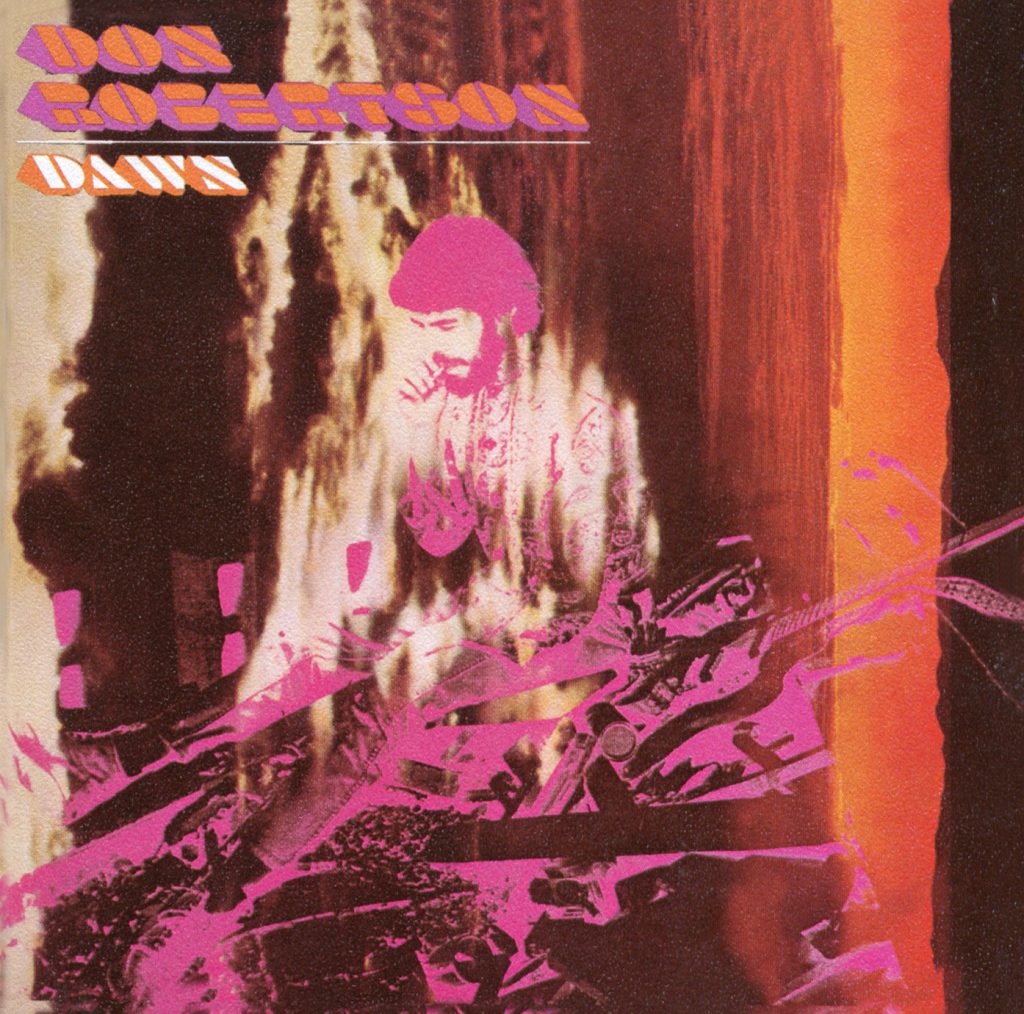
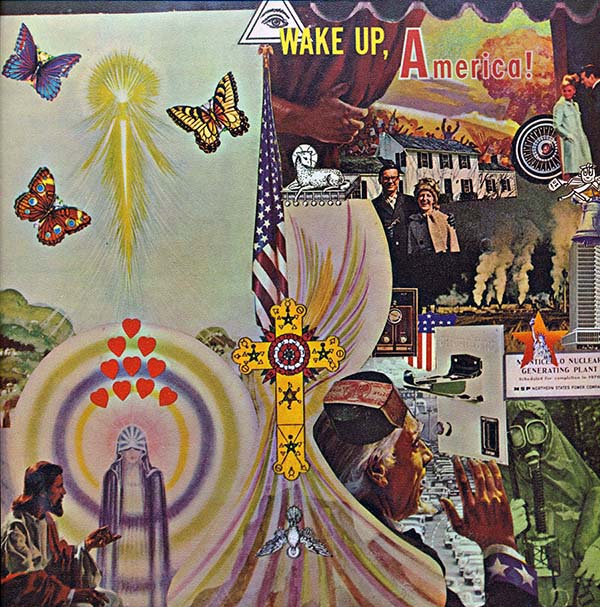
Based on what I had learned from Heline Corinne, I recorded my first album in San Fransisco in 1969 for Mercury Records’ Limelight label. The title, Dawn, was a reference to the dawning of a new age.
As a composer and musician, I had first begun moving in the direction of “new age music” after a 1968 realization that the so-called “contemporary classical music” that I had been composing for the previous four years was, in fact, negative music… the opposite of healing and uplifting positive music. Composing music based on discords had become de riguer by that time in so-called contemporary classical music. The Dawn album explained musically and graphically what I had discovered about music and its effects. It presented for the first time my understanding of positive and negative music.
With this pioneer album, I demonstrated that as in all things in creation, music too had an upside and a downside, based on the alignment of scales, chords and overtones with the harmonic structure of creation, as demonstrated centuries ago by Pythagoras and Plato.
To illustrate the difference between positive and negative music, Side One of the record presented the positive side – the “new age” music – and the other side, the negative. The opening music of Side One, the positive side, is a long piece called “Dawn” that I improvised on a multi-stringed Indian-type of instrument in the natural pentatonic (five-note) scale that is common the world over. It is the most harmonious of all scales. Along with that, my ex-wife provided a recitation from the ancient holy scriptures called the Upanishads.
For Side Two, I had been working on two kinds of negative music… one for each of my two lifelong music genres: popular and classical. What I had named “duochordal contemporary classical music” represented the evolution of my classical music as of 1968, and the other was “heavy metal music”. However, the term “heavy metal” had not yet been coined.
I had been working on this dark heavy metal music for about a year, and my influence was Blue Cheer’s Vincebus Eruptum album that had been released in January of 1968. Blue Cheer was the first heavy metal rock band.
When I had signed with Mercury Records, Blue Cheer’s producer, the late Abe “Voco” Kesh, became my producer also. And so, I ended up with Blue Cheer rehearsing in the studio next to mine. Abe Kesh had unleashed the first heavy metal album with Blue Cheer and the first album containing self-described new age music with me.
To properly demonstrate the positive and negative polarity in music, in the Grateful Dead’s studio using their engineer Dan Healy, I recorded my ultimate piece of heavy metal negative music that I affectionately called The Bomb! The music was so awful, so frightening, that when I went back into the control room after we had performed this negative music, everyone in the control room, including my sister and famed San Francisco KSAN D.J. Dusty Street, was completely devastated… and my drummer had gone crazy… running around the studio naked, shouting.
The Bomb! was so negative that I was frightened to release it, fearing the effect it may have had on people, and so I only included a few seconds in two places on Side Two.
The realization that music could have either positive or negative effects affected me deeply. After all, the music that I had been composing before this 1969 album had been mired in discords.
Don Robertson – “Dawn”
The Moody Blues
My full cleansing from the years of discordant music took place during 1969. After I had completed the Dawn album, I took a six-month sojourn in Mexico. It was there that a wide-eyed “hippie” named Wendell from Laguna Beach, California, continually stoned on LSD, told me about the rock band called The Moody Blues. My encounter with this music created an immediate love affair, and I listened to only the Moody Blues for at least a year. The Moody Blues’ music from that period was an island of bliss in a sea of the cacophony being created by the emerging heavy-metal groups, such as Led Zepelin and the Jimi Hendrix Experience.
An important documentary about the two directions that popular music followed beginning in 1967.
During my year listening to The Moody Blues, I gave away my radios, unplugged myself from the “Top 40” (the takeover of the U.S. music culture by the conglomerates) and instead began my own intensive study of the classical music of the European tradition, from Gregorian chant to the current day.
The Moody Blues – “Nights in White Satin”
My Ten Years Study and Seclusion
I had always been a student of classical music, but this new study that occupied me during the 1970s went far beyond what I had experienced to that point. My goal was to determine which music was positive and which was not. I would separate the healing from the confusing and the uplifing from the depressing. From what I had learned by reading Corinne Heline, I knew that within the classical music repertoire, I would make some great musical discoveries.
I began these studies by listening to the oldest music first: Gregorian chant. Slowly, I worked my way forward, listening, studying, and learning about the sacred music of the 13th, 14th, 15th, and 16th centuries.
It was a revelation when I discovered the great sacred choral music of the 16th century and some of its greatest composers. They were equal in stature to Bach and Beethoven, yet largely unknown: composers such as Orlando Lasso, Tomás Luis de VIctoria, Giovanni da Palestrina, Jacob Gallus/Handl, Christobol Morales and Josquin des Prez.
Then came the music of the baroque era followed by the classical and romantic periods. From the books of Corinne Heline, from which I had already learned much, I discovered three great and totally misunderstood composers of the romantic era: Richard Wagner, César Franck, and Alexander Scriabin… three of the most spiritual composers after the time of Beethoven, along with the Austrian composer Anton Bruckner. I spent about two years studying Wagner, and then more years on Scriabin and Franck. Except for a single piano piece that I wrote in one day, and a few pages of sketches, I composed no music during the 1970s.
